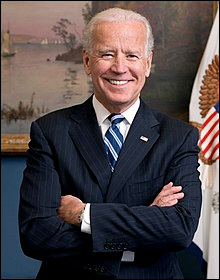
Former Colorado Gov. John Hickenlooper – running for Senate after all? (Photo Moritz Hager)
Aug. 6, 2019 — Some politicos are saying that former Colorado Gov. John Hickenlooper is poised to end his failed presidential campaign and return home to challenge Sen. Cory Gardner (R-CO). The speculation is largely coming because new Hickenlooper for Senate campaign domain names were just registered in the past few days. That, and in an interview Sunday on satellite radio, Hickenlooper said he would “be a fool” to continue running for president if he couldn’t see improvement in the polls.
Democratic leaders had long attempted to recruit Hickenlooper into the Senate race, but he steadfastly refused to be swayed from becoming a presidential candidate. He went further than rejecting the idea of running statewide in 2020 when he even expressed some disdain for the Senate as a political body. Hickenlooper seemingly ruled out serving in the Senate saying in February that, “I’m not cut out to be a senator,” and that, “Senators don’t build teams. Senators sit and debate in small groups…”
In his absence, no less than 14 Colorado Democrats have come forward to seek the party nomination to oppose Sen. Gardner, who began the 2020 cycle as arguably the most vulnerable Republican incumbent because his state is moving decidedly leftward. Ten months later, however, Sen. Gardner’s re-election chances appear stronger.
Of the 14 active candidates, six have electoral experience and seven have served in either elective, appointed, or political party positions. Colorado Secretary of State Jena Griswold leads the group, and former state House Speaker and statewide candidate Andrew Romanoff, ex-state House Majority Leader Alice Madden, former state senator and gubernatorial candidate Mike Johnston, state Sen. Angela Williams (D-Denver), ex-US Ambassador Dan Baer, and former Boulder County Democratic chair Ellen Burnes follow.
It is unclear just how many from this group, if any, would step aside for Hickenlooper, who is certainly a weakened political figure considering his national performance and given that he previously has said he doesn’t want the federal office. Therefore, it is conceivable that he will have to face what could be a difficult Democratic primary, and then Sen. Gardner, who is widely regarded as the best campaigner in the Republican candidate stable. According to the latest Federal Election Commission disclosure report, Sen. Gardner’s campaign account possessed just under $5 million at the June 30 deadline.
Though money will be no object for either Sen. Gardner or the eventual Democratic nominee, Colorado voting history is a major factor. The state has been trending much more Democratic since the turn of the century, and President Trump only recorded 43 percent of the vote in his loss here to Hillary Clinton. Prior to that, the last Republican to carry Colorado was George W. Bush in 2004.




 July 16, 2019 — We’ve seen an interesting trio of polls released over the past week that tested the New Hampshire Democratic electorate all within the same relative time span. The cumulative result produced three different leaders and found the top five candidates all within striking range of the top position.
July 16, 2019 — We’ve seen an interesting trio of polls released over the past week that tested the New Hampshire Democratic electorate all within the same relative time span. The cumulative result produced three different leaders and found the top five candidates all within striking range of the top position.

